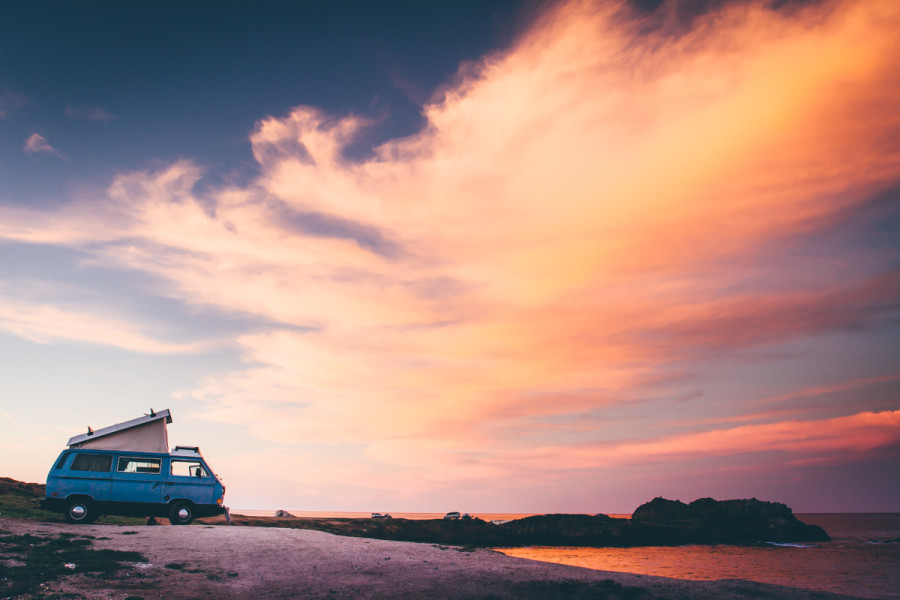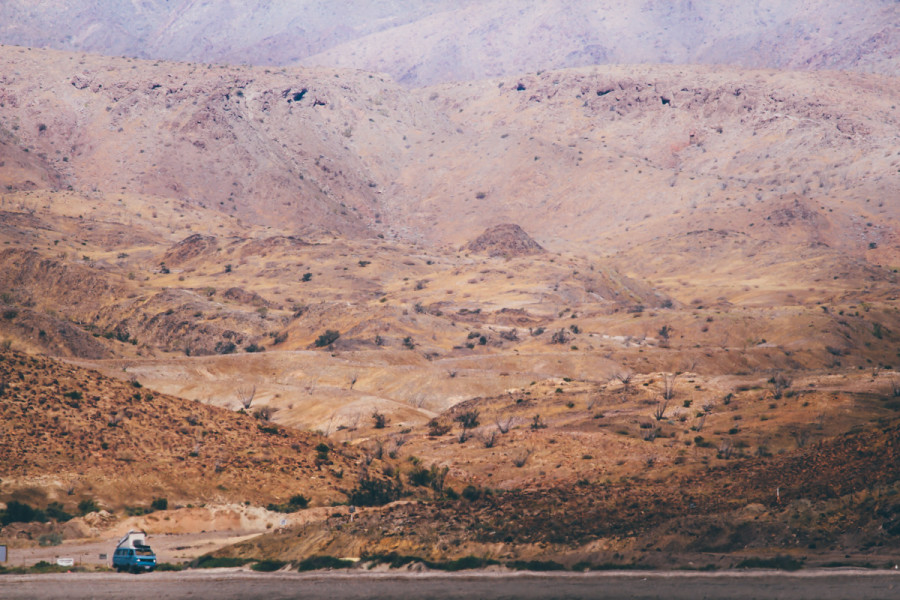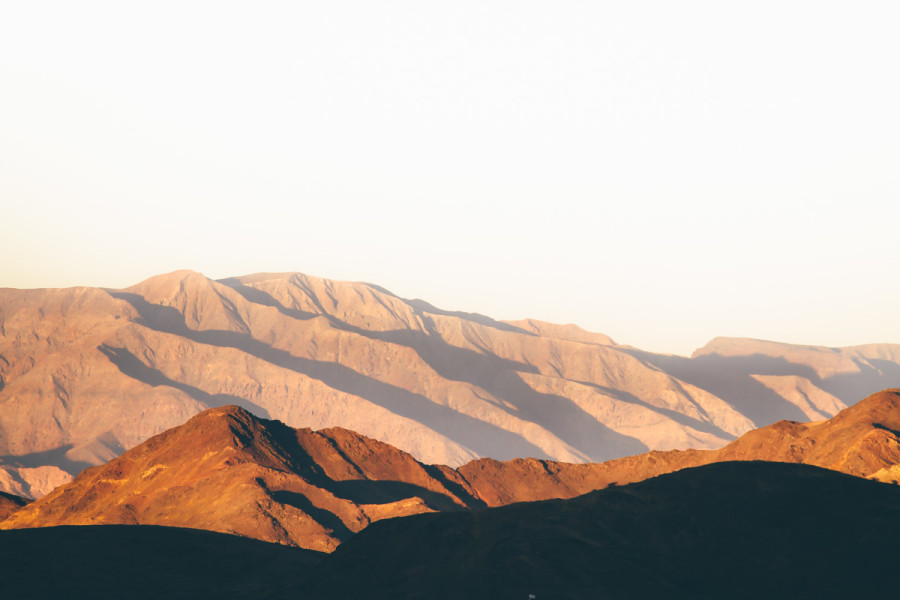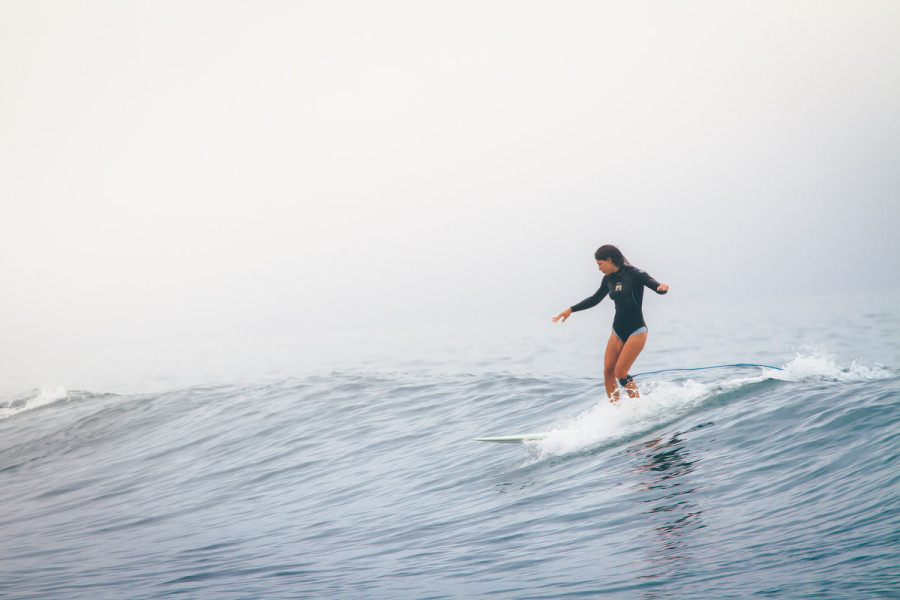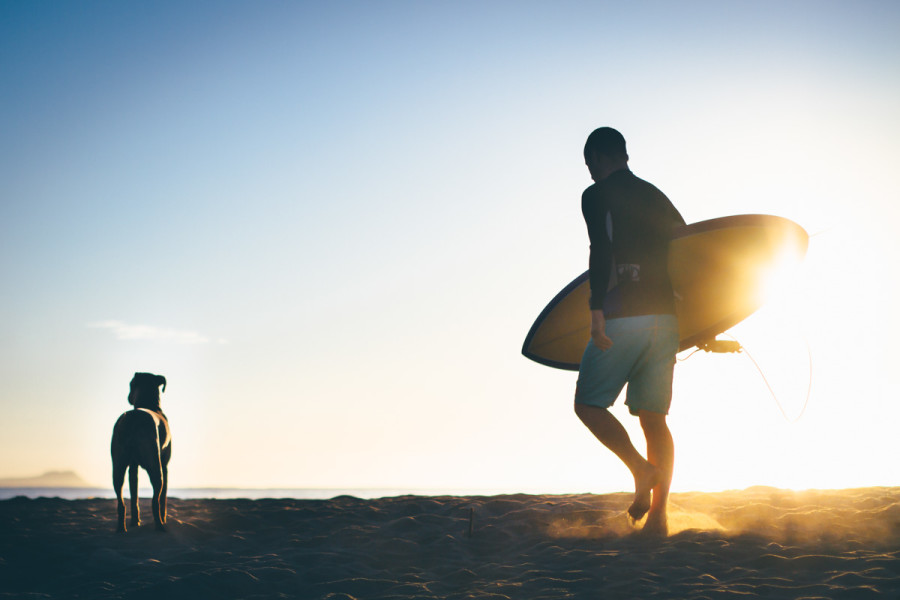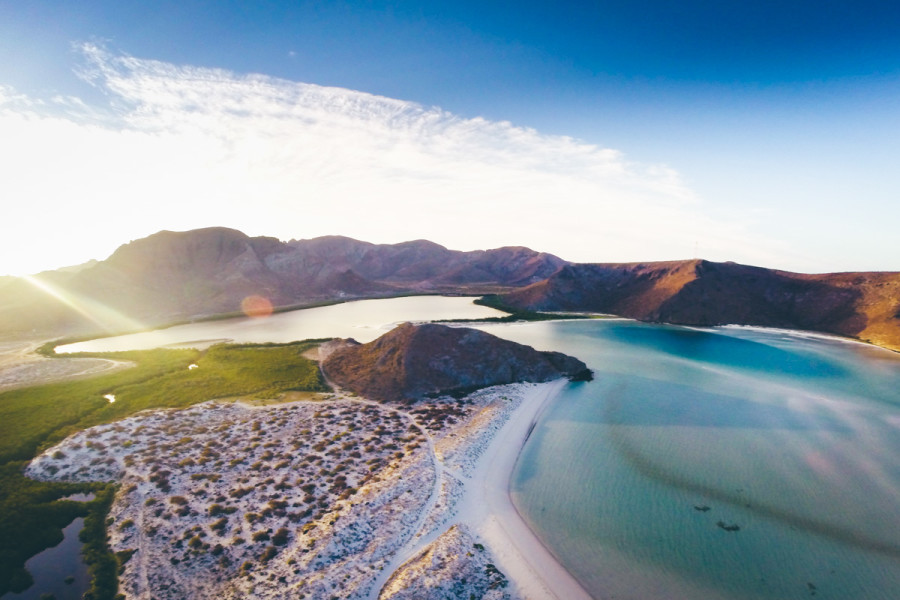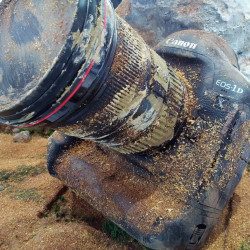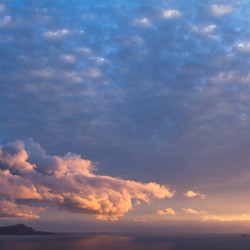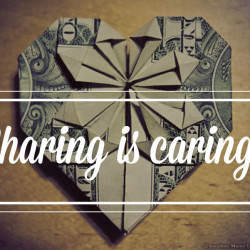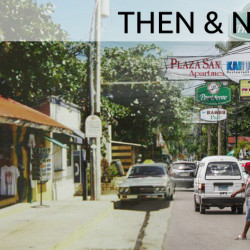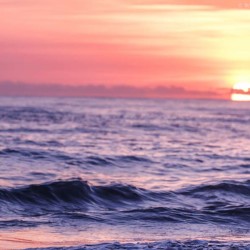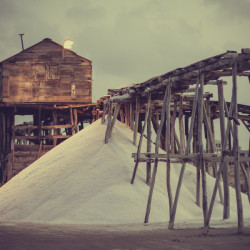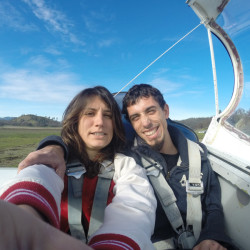In Baja there can be hundreds of miles between you and the next human, not to mention the next gas station or grocery store.
The vast open Pacific ocean stretches for miles to the west, hindered only by the Hawaiian archipelago all the way to Asia. Any storm in the pacific is going to create swell which will eventually hit Baja.
That’s what makes it is the perfect destination for an extended surf trip. That’s also what makes it imperative to be well prepared. The sun roasts the sand and boulders from dawn till dusk, and to get stuck here, far from civilization, might mean days endured battling scorching days, chilly nights, and no access to water.
Preparing for a Baja Surf Trip.
The vehicle you choose isn’t as important to a successful Baja trip as are the provisions you bring along. Whether you’re traveling the coast by motocross or VW van, you’ll need to make sure you’re well stocked at all times for the multiple long, dry stretches between pueblos.
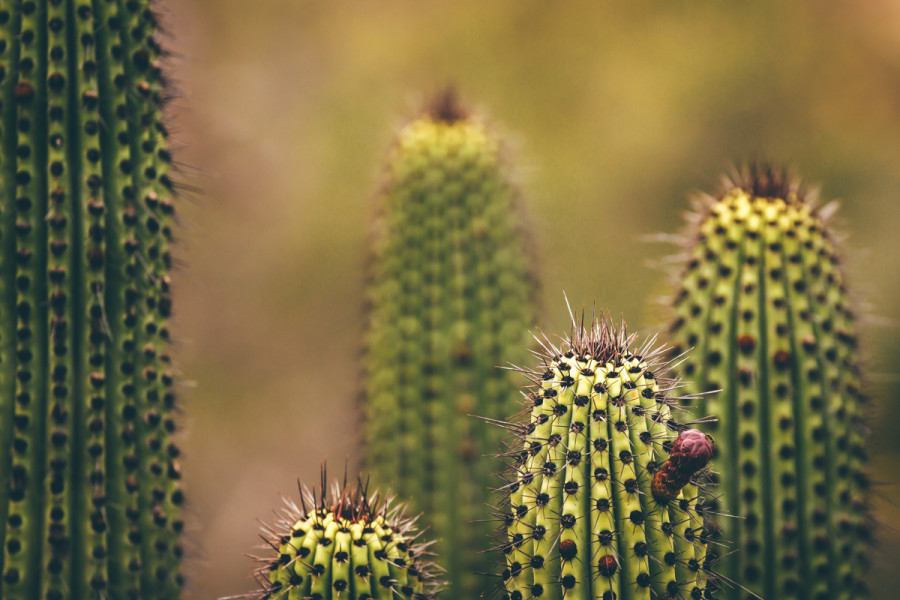
Provisions:
food
water
gasoline
Food:
Every time you hit a town you’ll want to stock up on food. It’s relatively easy to find anything you need from the abbarotes and supermarkets. If you have a fridge or cooler in tow, make sure to find the local tortilleria to stock up on fresh-made tortillas, the fruterias to replenish on lots of fresh fruits and veggies, and the abbarotes for your grains, eggs, and whatever else. Don’t fret too much over protein, no matter how small of a town neighbors your surf spots, you’ll most likely run into local fishermen coming out of the water who will be more than willing to unload some of their daily catch immediately.
Water:
For such an arid area, water, surprisingly, is extremely easy to come by. Any town with a population higher than 10 will be equipped with a “Purificadora” where you can refill your jugs.
[Tweet “#Baja Travel #Tip: Refill your #water at the #purificadora”]
Make sure to stock up with a gallon per person per day you plan to spend camping away from towns. This is more than you need, but it’s better to have more water than not enough in case you get stuck somewhere.
If your vehicle has a water tank which you’ll be using for dishes, you can fill up at most Pemex stations which usually have a hose hanging about.
Gasoline:
Although, as Baja develops, the Pemex stations are popping up on the landscape like hallucinogenic mushrooms in a cow patch, there remain large stretches of highway with no gasoline, and they’re even harder, if not impossible to come by away from the main drag.
Calculate how much gas you will need before the next gas station and make sure to have at least 30% more than what you think you need. How do you know where the next station will be? That leads us to the next set of necessities.
Road Safety:
Roadmap
phone
spare tire/tube sealant
shovel
Roadmap:
You’ll want to get your hands on a recently updated road map. You can find something satisfactory from most tourism offices or hotels. Fold out maps with Baja California (BC) on one side and Baja California South (BCS) on the reverse. What you’re looking for mostly is a map which has the Pemex stations marked. [Tweet “#Baja Travel #Tip: Get a #map with the #Pemex stations “]Such a map will also show you a gross approximation of where the highway 1 passes, as well as which roads are paved, graded, or dirt. Depending on where you find it you’ll also have some other helpful information like dive sites, national reserves, and other tourism points of interest. These maps will make planning helpful, but you cannot rely on solely this to navigate your way around. You’ll also need some sort of GPS.
Phone:
We found that our iPhone, which shows us where we are on the map even while offline, was a good enough supplement to the tourism maps. Preplanning the next leg of your trip by loading the road map as well as google earth satellite images can be a life saver when the road inexplicably disappears into the sand dunes.
[Tweet “#Baja Travel #Tip: Dial 074 and the #GreenAngels come to the #rescue “]
Popping a local SIM card into your phone will also be a great help because you’ll be able to dial 074 anywhere on highway 1, where the “Green Angels” will come to the rescue if you find yourself in some sort of mechanical trouble. Paid by the ministry of tourism, they’ll interrupt their routine rounds to come find you, spare parts and all, and get you out of a bind, 24/7. It isn’t necessary to pay them, but tips are highly appreciated.
Spare Tire:
Rocks and cactus parts are all over the paved roads, and more abundant still on the graded and dirt/sand sections. Your chances of getting a flat are highly likely, and although the Green Angels might be able to get to you, there’s no point in waiting in the heat for something as simple as fixing a flat. Make sure you have a spare (or two) or at least some tube sealant.
Shovel:
There are some sweet surf spots only accessible by driving through stretches of sandy “road.” It’s possible to extend the distance driven on sand, even with a 2-wheel-drive vehicle if you deflate your tires a bit.
[Tweet “#Baja Travel #Tip: Deflate your tires to #drive on #sand”]
If you can carry a compressor, you’ll be able to reach into some really remote parts of the coast. However, if you don’t, or if you get stuck with this method anyway, you’ll need a shovel to dig yourself out of a bind. I don’t recommend testing your luck away from civilization without a shovel. If you’re near the ocean when you get stuck, you can also try to dump a bucket full of sea-water under and in front of your tires before you get too deep in. This will compact the sand and help you get traction out of your sandy snare.
A shovel will also be handy to dig yourself a poop-hole away from proper amenities.
Health Care/Hygiene:
Toilet Paper
Hat
Sunscreen/aloe
Polysporin
Toilet Paper:
You’ll inevitably find yourself needing to take care of nature while camping and find that there are either no facilities, or that the outhouse is out of paper. When out in the bush, please don’t leave your crap and paper out in the open, it ruins the campsite for the next folk and is just rude. Keep in mind that although storms are few and far between, they do happen, and when they do, water rushes down with flash-flood force, ripping everything, including fully paved highways, in its path. [Tweet “#Baja Travel #Tip: Bring a #shovel, there are no #bathrooms in the #desert”]If you take a dump in a dry river bed, and every other camper does the same, when that river decides to turn into a rapid, months of dried up human shit will get dumped into the ocean. Be considerate and find yourself a nice spot on a hill somewhere and dig a hole. When you’re done, cover it up with the sand you dug out. Learn to poop in nature.
Hat:
It’s hard to find shade in Baja. If you plan on spending any sort of time away from your beach umbrella, you’ll need to protect your head to avoid heat stroke. Super well made and very stylish Mexican hats can be found for 80 pesos (USD$5) or less at the little stands on the side of the highway, although they become more rare the further south you get from Ensenada and start popping up again only around Mulege. Get yourself one if you forgot yours at home. Of course, bringing some sort of shade-tarp or umbrella will also make your stay more bearable.
Sunscreen/aloe:
Surf’s not always up when the sun is low on the horizon. Sometimes you’re going to get called out to the ocean mid-day, and you’ll definitely need to cover your skin from the UV.
[Tweet “#Baja Travel #Tip: don’t forget your #sunscreen”]You’ll still be needing a wetsuit in some parts of Baja, but don’t forget your face, and behind the ears. Don’t grab just any sunscreen,
You’ll still be needing a wetsuit in some parts of Baja, but don’t forget your face, and behind the ears. Don’t grab just any sunscreen, get one that’s not gonna kill you.
Chances are you’ll get burnt at some point anyway, so make sure you have some soothing aloe on hand as well.
Polysporin:
I’m not one to recommend drugs of any kind, but wasps and bees are a fact of Baja. If you don’t find yourself swarmed by them at some point in your trip while they desperately forage for any water they can find, including the almost non-existent condensation of your metal vehicle, then you’ll for sure drive through a cloud of them while speeding down the highway.[Tweet “#Baja Travel #Tip: Bees and Wasps love #water as more than you do. “] One will inevitably find its way onto a bare patch of skin, and without polysporin, you’ll be in pain for the next few hours and itchy for the next few days. Oh, and take it from experience, the torrid sun just makes it worst. Don’t be too paranoid about them, they’re mostly inoffensive unless they feel threatened, and anyway, bee stings are great for the immune system.
Fun Gear:
wetsuit
surf gear
snorkel gear/fishing pole
cards
camera
Wetsuit:
If it’s your first time going to Baja you might not realize that although the land is roasting, the ocean currents bring chilly water down from the arctic. Depending on the season, and if you like your sessions to be longer than a half hour, you’ll need a full suit down to about Scorpion Bay, and a spring suit almost all the way to Cabo.[Tweet “#Baja Travel #Tip: The sun is #hot but the #ocean’s cold!”] Check the seasonal water temperatures at the breaks you plan to hit to gage what thickness suit(s) you should bring with you.
Surf Gear:
Surf shops are few and far between in Baja. To keep your quiver functional, you’ll need to make sure you’re ready to deal with dings and other emergency/routine fixes. This includes but isn’t limited to: wax, extra fins, fin keys, extra leash, quick-repair, sandpaper, and a board bag to keep your baby from glass-destroying sun damage.
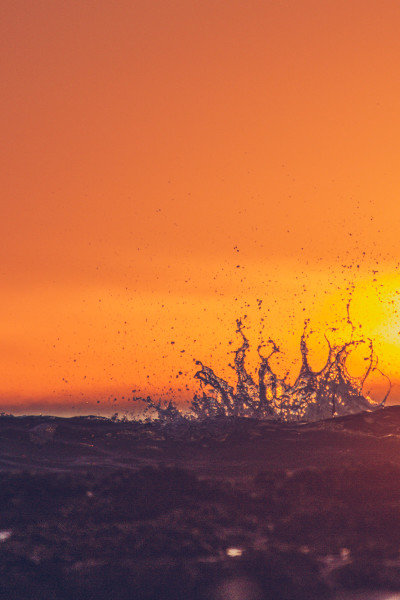 Snorkel gear/Fishing pole:
Snorkel gear/Fishing pole:
Baja’s coasts aren’t only home to great swell, they also nurture diverse ecosystems, both on the Pacific and Cortez shores. When the surf didn’t show up to the party, or while touring the east coast, you’ll have a blast exploring below the surface. You might also get lucky and save yourself a few pesos by grabbing your own fish. Talk to locals to get a handle on the currents and best fishing spots.
Cards:
Sometimes nature likes to meddle with the best laid plans. The forecast might have told you the swell was to show up today, but sometimes it’s a day late (or more) With no distractions and midday temperatures impeding hikes longer than 45 minutes, you will most definitely find yourself needing to kill seemingly endless stretches of time here and there.
[Tweet “#Baja Travel #Tip: bring a deck of cards to fight off #boredom”]
Although it’s great to wind down and take to the desert’s rhythm, idle time can be a sane-mind’s worst enemy. Bring board games, decks of cards, a needle and thread, or any other sort of hobby you enjoy to fill the slothful noontide hours.
Camera:
No pics and it never happened, brah. No matter the season, you’re destined to hit some legendary swell at some occasion during your trip. Even if you don’t you’ll be blessed by gorgeous, endless, out-of-this world, and imposing landscapes, not to mention the unbelievably magical moments. Don’t leave your camera at home. You don’t need to be filling your hours with selfies, but you’ll want at least a handful of select shots to eternalize your trip.
Most importantly, have fun!
Respect this mystical landscape and it will bless you with memories your grandchildren with relish, but remember that the desert can turn on you quickly. Obvious dangers involve heat and dehydration, but the most unlikely of killers, water, and its prodigious force can be just as, if not more dangerous. Check the weather and flash flood warnings. Also check the hurricane forecast.
Also remember that even a little Spanish goes a long way. Do your best to try and you’ll find that the lovely and truly amicable and helpful people of Baja California will welcome you with open arms.
Most importantly, have fun!
Have you been to Baja? Would you add something to this list?
Has this helped you plan an upcoming trip?
What’s your favorite Baja memory?
